- 4 Technology
- Technology Development
Clean-Crete, a Low-Carbon Concrete Which Has Expanded Its Applications to Disaster Waste Disposal Operations
First full-scale application of Clean-Crete, a low-carbon concrete, to a public works project
Adoption in the disaster debris disposal operation, Watari-Natori Block (Watari disposal area)
OBAYASHI CORPORATION applied Clean-Crete, a low-carbon concrete that can reduce CO2 emissions by up to 80% compared to normal concrete by using ground-granulated blast furnace slag, etc., to the facilities foundation concrete of the disaster debris disposal operation, Watari-Natori Block (Watari disposal area), ordered by Miyagi Prefecture. This is the first example of full-scale application to a public civil engineering project, following applications in in-house facilities and private sector facilities to date.
On the occasion of this application, Obayashi Corporation proposed the application of Clean-Crete because measures to reduce greenhouse gas emissions were required due to the client’s global environmental conservation perspective, and the proposal was adopted.
We used high-early-strength Portland cement in the cement for the base, in addition to application of the formulation of the standard Clean-Crete, in order to prevent initial frost damage when placing the concrete in the conditions of mid-winter construction in a cold region. As a result, the construction period for the concrete works was greatly shortened, contributing to early commencement of operation of the disaster debris disposal facilities.
Moreover, the manufacturing of the Clean-Crete on this occasion could be implemented in a small-scale ready-mixed concrete factory, so we demonstrated that manufacturing and application in accordance with the situation in many regions nationwide was possible.
The overview of the application of Clean-Crete on this occasion is as follows.
-
Name of Project
Disaster debris disposal operation, Watari-Natori Block (Watari disposal area)
-
Application Sites and Quantity
The base mats which serve as the work floors and machinery foundations in the crushing and sorting area of the secondary disposal facilities, approximately 1,200 m³
-
Reduction in CO2
The CO2 emissions in this project are approximately 100 kg/m³, a reduction in CO2 of approximately 70% compared to CO2 emissions in the case that normal concrete is used.
(*We reduced the cut in emissions slightly in order to increase the mixing ratio of the cement for mid-winter construction.) -
Time of Application
February 1 to February 13, 2012
Status of adoption in the disaster debris disposal operation, Watari-Natori Block (Watari disposal area)
・Status of construction of Clean-Crete in mid-winter using pumping trucks
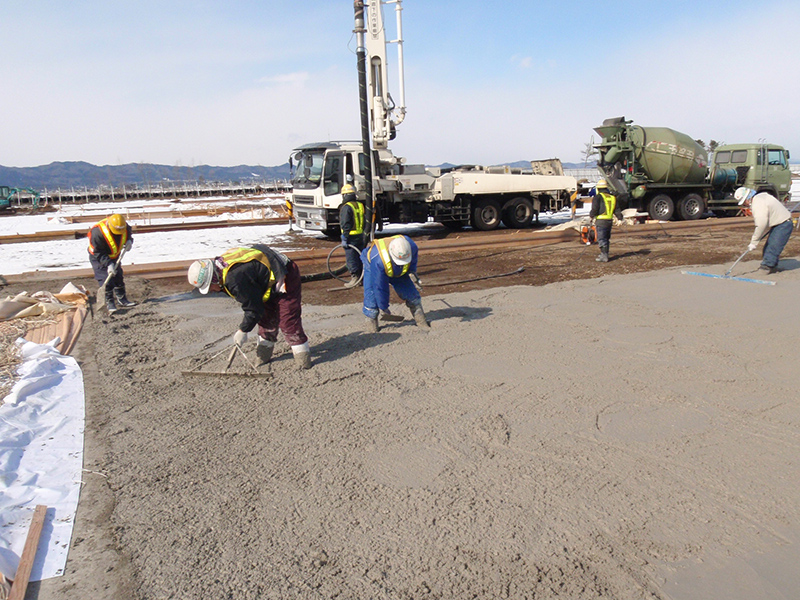
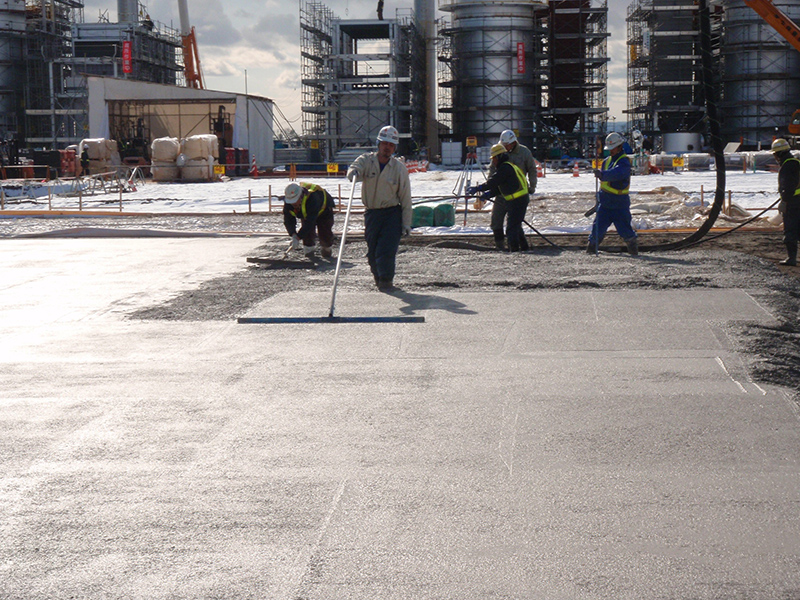
・Work floor and machinery foundation concrete using Clean-Crete
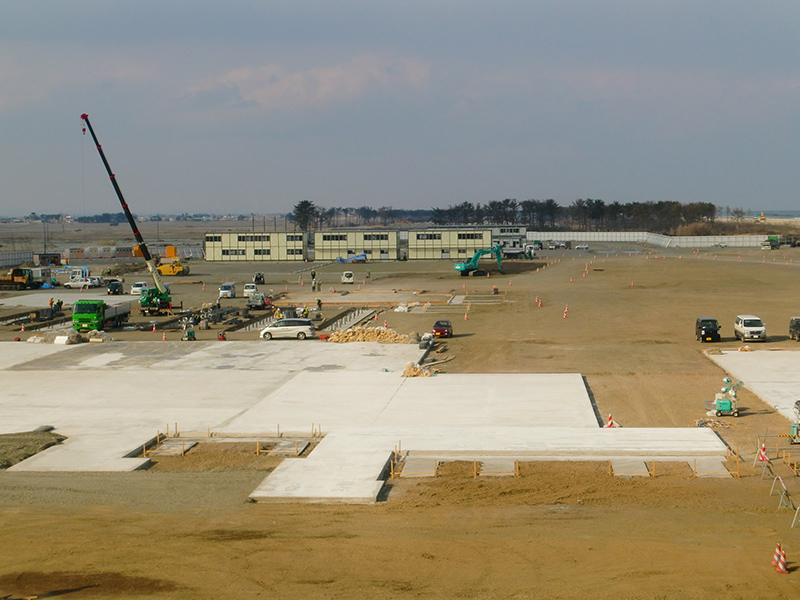
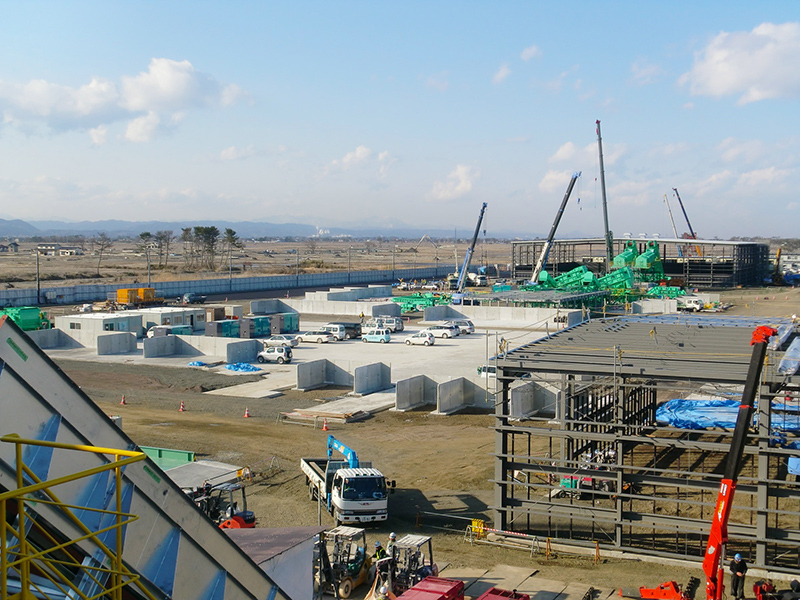
・Status of installation of waste disposal facilities on foundation concrete using Clean-Crete
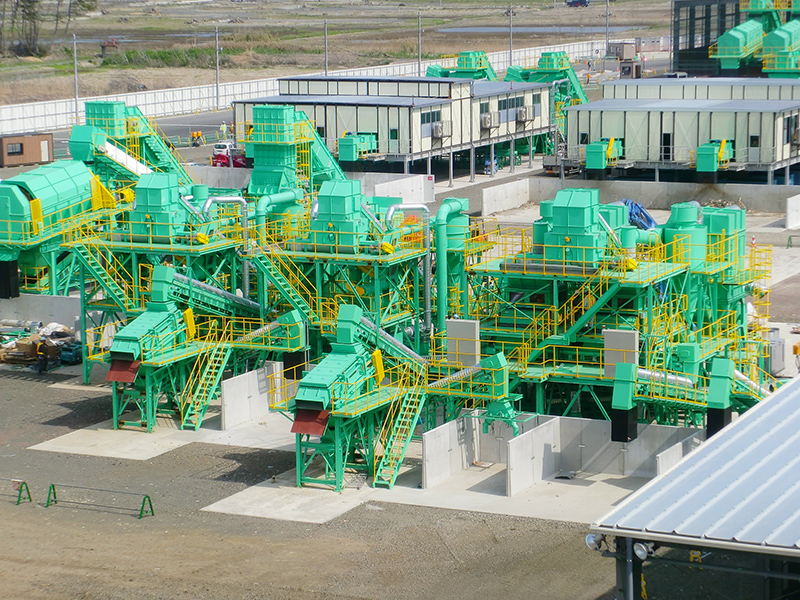
[Reference] About Clean-Crete
Approximately 300 kg of CO2 per 1 m³ is emitted from concrete, the main material in all types of building structures, in manufacturing processes. Simply converting the 88,000,000 m³ of concrete used in Japan in FY2011 gives a result of at least 26,400,000 tons of CO2 being emitted in that year. It was important to make concrete, which is used so much, low-carbon in order to reduce the environmental load when building structures were constructed.
Obayashi Corporation developed Clean-Crete, which is capable of greatly reducing CO2 emissions, in May 2010.
The features of Clean-Crete are as follows:
-
Great reductions in CO2 emissions and effective utilization of by-products
Clean-Crete re-uses large amounts of ground-granulated blast furnace slag and other by-products from steel-making factories, so it can greatly reduce the CO2 emissions generated by the materials used and it is possible to reduce CO2 emissions by as much as 80% compared to ordinary concrete.
-
Ensures durability and strength
By using large amounts of ground-granulated blast furnace slag, generation of heat by the concrete is reduced, and the cracking of concrete structures can be reduced. Furthermore, salt intrusion can be greatly reduced, so the durability of structures can be enhanced. In addition, adequate design standards regarding strength have been ensured.
-
Application is possible with ordinary construction methods
In the same way as ordinary ready-mixed concrete, Clean-Crete can be manufactured at ready-mixed concrete factories, and can be transported and placed using ready-mixed concrete trucks and pumping trucks.
- Management and
Organization- The Articles of Incorporation
- Basic Principles
- Transitioning of Corporate Symbol
- Corporate Officers
- Organization Chart
- Stock Information
- Financial Statements
- Technology
- BIM Timeline
- Awards
- Major Publication
- Group Companies
- Group Companies (in Japan)
- Group Companies (Overseas)